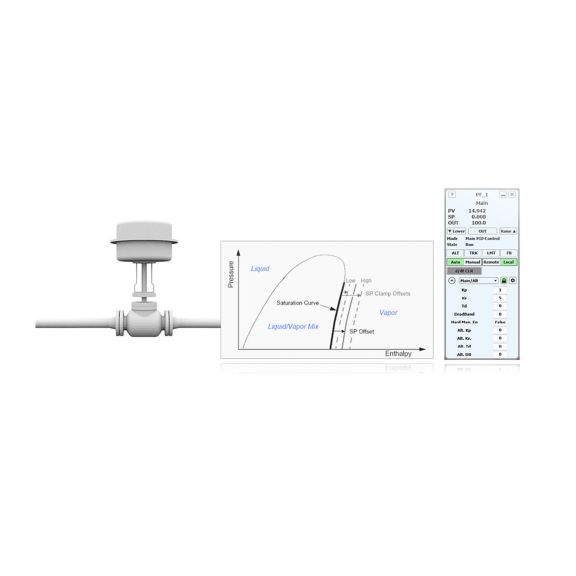Compressor Control
Quench Control
The CCC quench control app is used in refrigeration, where the compressor produces the quenching liquid. It keeps the recycle stream cool enough to prevent heat buildup while avoiding excess liquid in the gas/liquid mix at the compressor inlet.
Please sign in to access more documents
Once signed in, you may be able to access additional documents for your account.
Overview
Simple quench controllers maintain temperature at a given set point using a standard PID loop and are slow to react to fast changes in recycle. This type of control also does not account for pressure changes which affect the gas dew point and often have set points that are conservative which leads to excessive quenching.
What Is It
CCC quench control application is commonly used in refrigeration applications as the liquid for quenching is produced by the refrigeration compressor. This is necessary to maintain the recycle stream temperature at a level cool enough to prevent heat build-up in the compressor, but still warm enough to prevent too much liquid accumulation in the gas/liquid mixture within the compressor inlet drum. The desirable quench temperature set point is typically just above the saturation temperature of the refrigerant at a given pressure.
How Does It Work?
CCC quench control application uses the saturation curve of the refrigerant gas and suction drum pressure to accurately determine a temperature set point. The set point is configured as an offset from the saturation curve. Through coordinated control with CCC antisurge control, the quench controller will quickly add quench flow in anticipation of temperature increase when the recycle valve opens rapidly. This prevents large swings in suction drum temperature. In addition, the quench controller will only add quench when the recycle valve is open which prevents liquid build up.
Some of the key features of the CCC quench control application include:
- Coordinated control with CCC antisurge controller
- Feed forward control
- Automatic sequencing of quench valve
- Continuous calculation of temperature set point
- Pre-defined saturation curves for Ammonia, Ethylene, Propylene and Propane
- Remote set point offset to allow for operator adjustment
- Set point offset high and low clamps
- Prevents Damage: By setting its temperature set point dynamically based on phase diagram, it prevents unnecessary accumulation of liquid in the drum which can lead to impeller damage from liquid entry.
- Increases Uptime: By coordinating antisurge controller and quench controller responses, it provides more stable temperature control which helps avoid tripping the compressor from overtemperature.
Please sign in to view part numbers available for purchase based on your account Sign In


